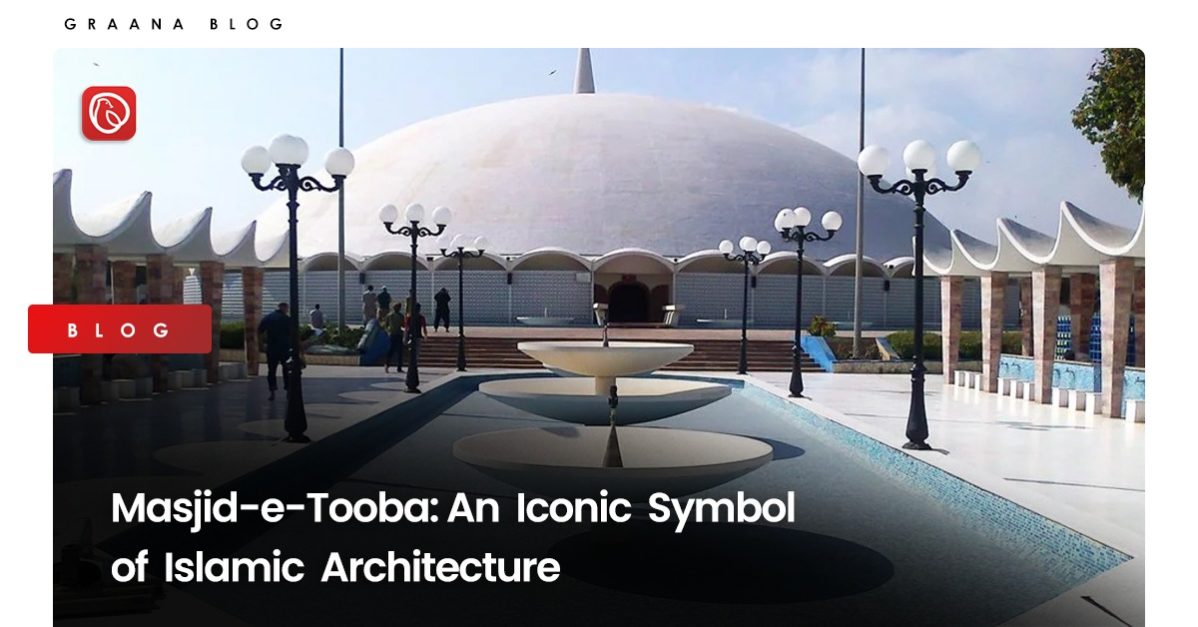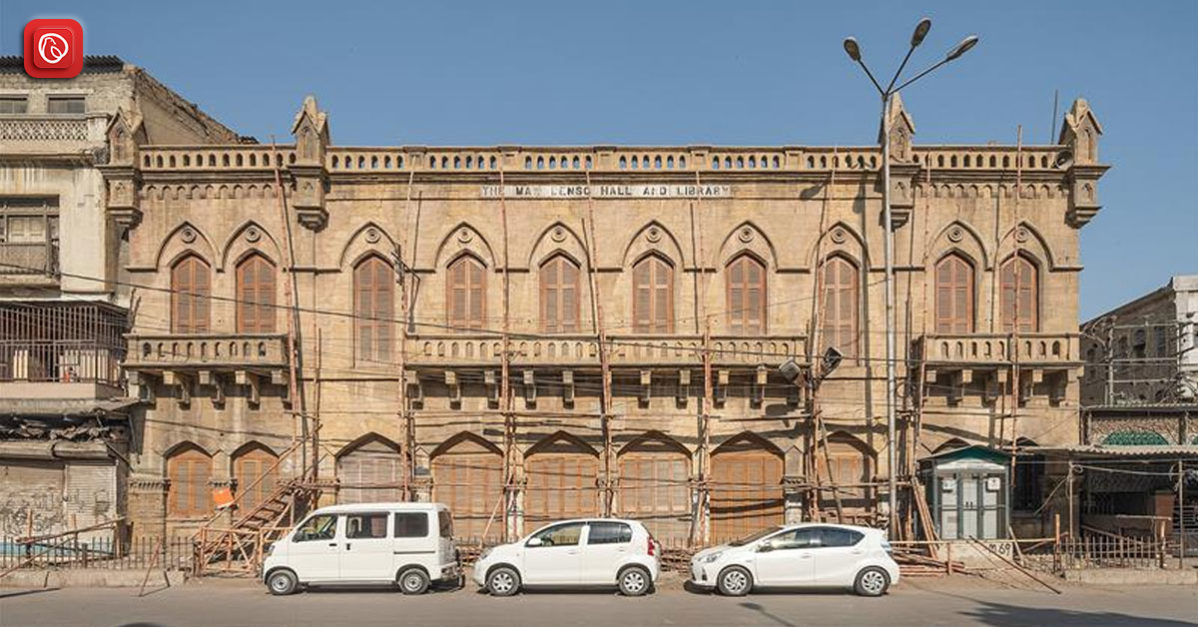Masjid-e-Tooba, also known as the Gol Masjid (گول مسجد), is a beautiful mosque located in Karachi. It is also one of the largest single-domed mosques in the world.
In this blog, In this blog, Graana provides a detailed overview of Masjid-e-Tooba, including its history, architecture, and significance.
History of Masjid-e-Tooba (Gol Masjid)
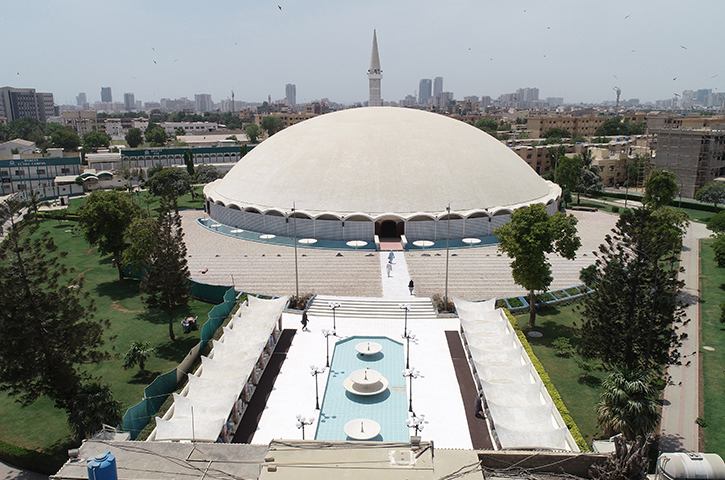
The history of Masjid-e-Tooba is intertwined with the history of Karachi. The city, which was founded in the mid-18th century, has a rich cultural heritage, with a significant Muslim population. However, until the mid-20th century, there were relatively few notable mosques in Karachi, and many Muslims in the city did not have access to a proper place of worship.
In the 1960s, the Karachi Municipal Corporation (KMC) decided to build a new mosque and acquired a plot of land in the eastern part of the city, near the Pakistan Naval Academy. The site was chosen because it was centrally located and easily accessible from all neighbourhoods.
The KMC then held a design competition for the mosque, which was won by Pakistani architect Dr. Babar Hamid Chauhan. Dr. Chauhan’s design was unique; it featured a single dome that was larger than any other dome in Pakistan at the time.
Construction of the mosque began in 1966, and it took three years to complete. The mosque was built by the local community of Karachi, which contributed both financially and physically to its construction. Certainly, it was a major undertaking, and it required the efforts of many skilled craftsmen and labourers.
The dome alone required more than 70,000 man-hours of labour to construct. When the mosque was completed in 1969, it was named Masjid-e-Tooba, which means “the mosque of goodness and benevolence.”
Today, Masjid-e-Tooba is one of the most iconic symbols of Indo-Islamic architecture in the world. Its unique design and beautiful white marble walls have made it a historic landmark in Karachi. Moreover, the mosque is a testament to the beauty and elegance of Islamic architecture. It will continue to inspire and awe visitors for generations to come.
Architecture of Masjid-e-Tooba
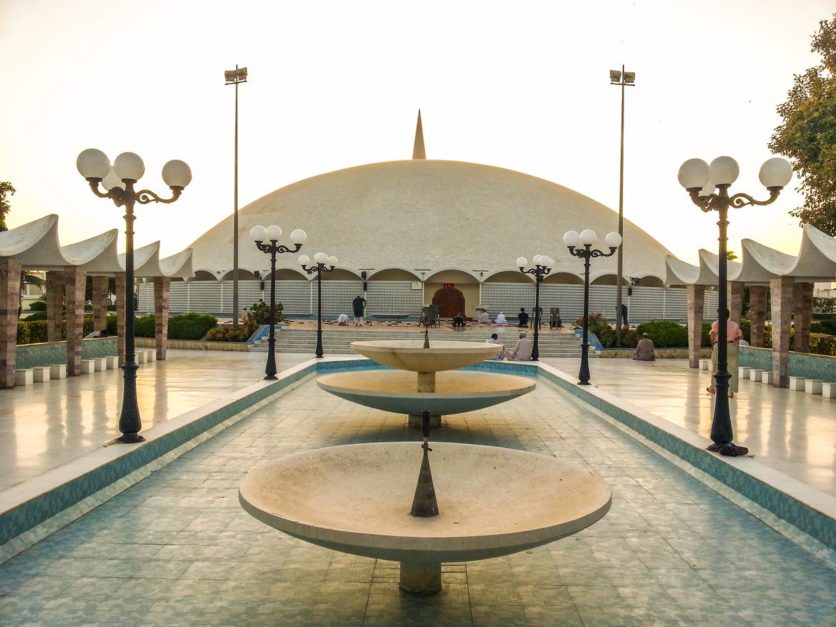
The design of Masjid-e-Tooba is a prime example of how traditional Islamic architecture can be modernised and adapted to contemporary needs.
One of the most notable features of Masjid-e-Tooba is its large single dome, which has a diameter of 70 metres and is supported by 16 slender pillars. The dome is made of pure white marble and is one of the largest of its kind in the world. The absence of a central pillar inside the mosque allows for an unobstructed view of the dome from any angle, creating a sense of openness and unity among worshippers.
The prayer hall of the mosque is circular in shape, and its walls are adorned with beautiful calligraphy in black and white. The floor is covered with white marble, and the interior of the mosque is filled with natural light, creating a serene and peaceful atmosphere.
The mosque also features a large courtyard, which is surrounded by a colonnade of white marble pillars. The courtyard is a common gathering place for worshippers before and after prayer, and it is also used for community events and celebrations.
The simplicity and elegance of the mosque’s design are a reflection of the Islamic faith’s emphasis on beauty and harmony. On the other hand, its modern design elements symbolise Pakistan’s aspirations for progress and modernity.
Significance of Masjid-e-Tooba
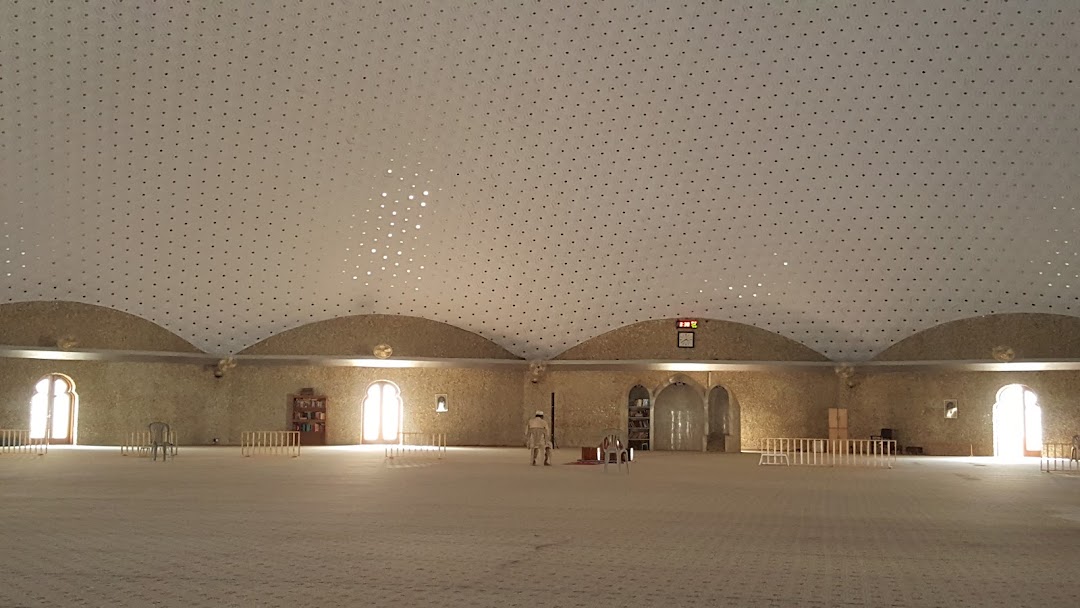
Masjid-e-Tooba’s unique design and beautiful architecture have made it a symbol of Islamic art and a source of inspiration for architects and designers worldwide. Here are some of the ways Masjid-e-Tooba is significant:
Religious Significance
Masjid-e-Tooba serves as a place of worship for Muslims in Karachi, providing a spiritual sanctuary for those seeking to connect with their faith. The mosque’s open design and spacious interior allow worshippers to feel a sense of community.
Architectural Significance
It is an iconic example of Islamic architecture, combining traditional Islamic design elements with modern engineering. The mosque’s large single dome and 16 supporting pillars are awe-inspiring.
They make it one of the most significant architectural landmarks in Pakistan. Furthermore, its elegant and sophisticated design has also earned it international recognition.
Cultural Significance
Masjid-e-Tooba is a part of Karachi’s cultural heritage and plays a vital role in the city’s identity. The mosque is a symbol of Pakistan’s rich cultural heritage, which blends Islamic traditions with local customs.
In addition to that, the mosque’s construction brought together the local community, who contributed financially and physically to its construction, creating a sense of shared ownership and pride.
Tourism Significance
Masjid-e-Tooba attracts a large number of visitors who come to admire its unique design and learn about its history and cultural significance. They can also avail of the guided tours that are offered in the mosque.
Social Significance
Masjid-e-Tooba plays a crucial role in the social fabric of Karachi. It provides a gathering place for Muslims to come together and connect with each other. Moreover, it is a centre of community life, and its courtyard is a popular gathering place for locals, especially during religious festivals and celebrations.
This was all about one of the most beautiful mosques in Pakistan. For more relevant information like Grand Jamia Masjid, visit Graana.com.
